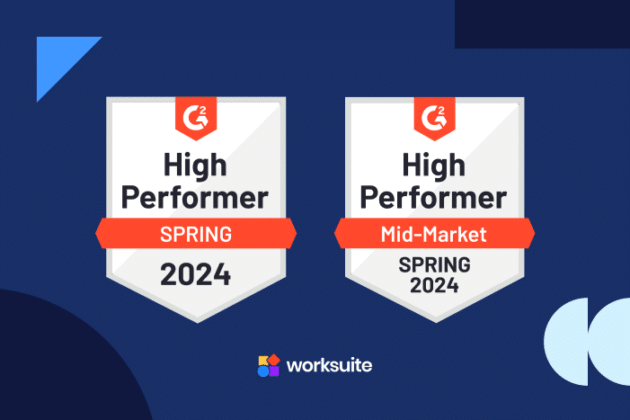
How tech layoffs are accelerating the move towards a new form of work
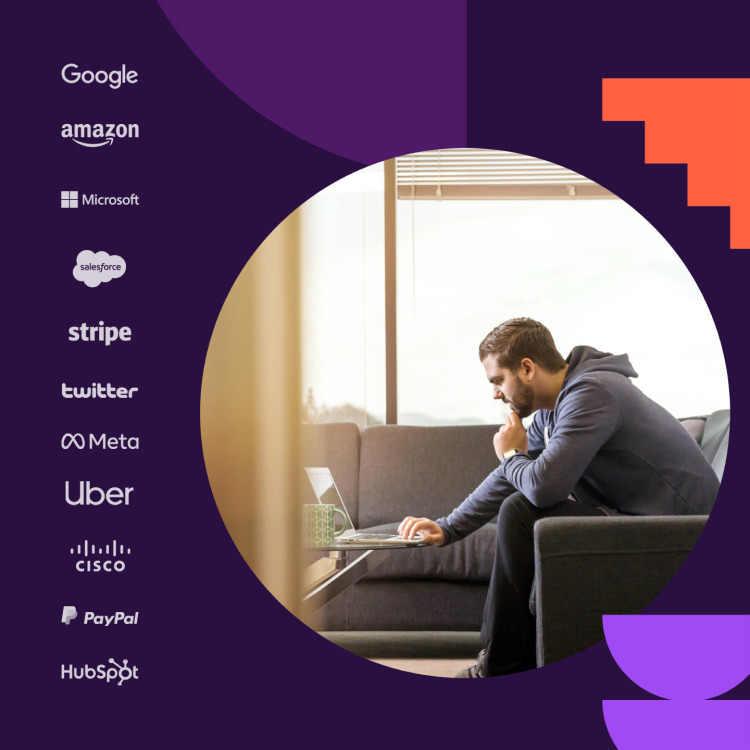

Working 9 to 5 is no longer the way people want to make a living. With hundreds of thousands of tech layoffs since the pandemic, many people are choosing to rethink their careers to reduce their financial risk and avoid dependency on one employer. In this article we’ll take a look at why a growing number of professionals are choosing to go freelance, or work multiple jobs.
It’s no surprise that the amount of professionals working two or more jobs has coincided with the surge of tech layoffs over the last year.
After the Covid hiring boom, tech companies are now feeling the pressure of a declining economy—and facing the reality that their current employee numbers are now unsustainable.
The layoffs landscape
The numbers of people losing their jobs between 2022-2023 has been staggering:
- Google – 12,000
- Amazon – 10,000
- Microsoft – 10,000
- Salesforce – 8,000
- Stripe – 1,120
- Twitter – 3,700
- Meta – 11,000
- Uber – 6,700
- Cisco – 4,100
- Paypal – 2,000
- HubSpot – 500
And that’s only scratching the surface of the tech layoffs that recently rolled out. It seems nobody is safe, even those who felt insulated working for the world’s biggest companies.
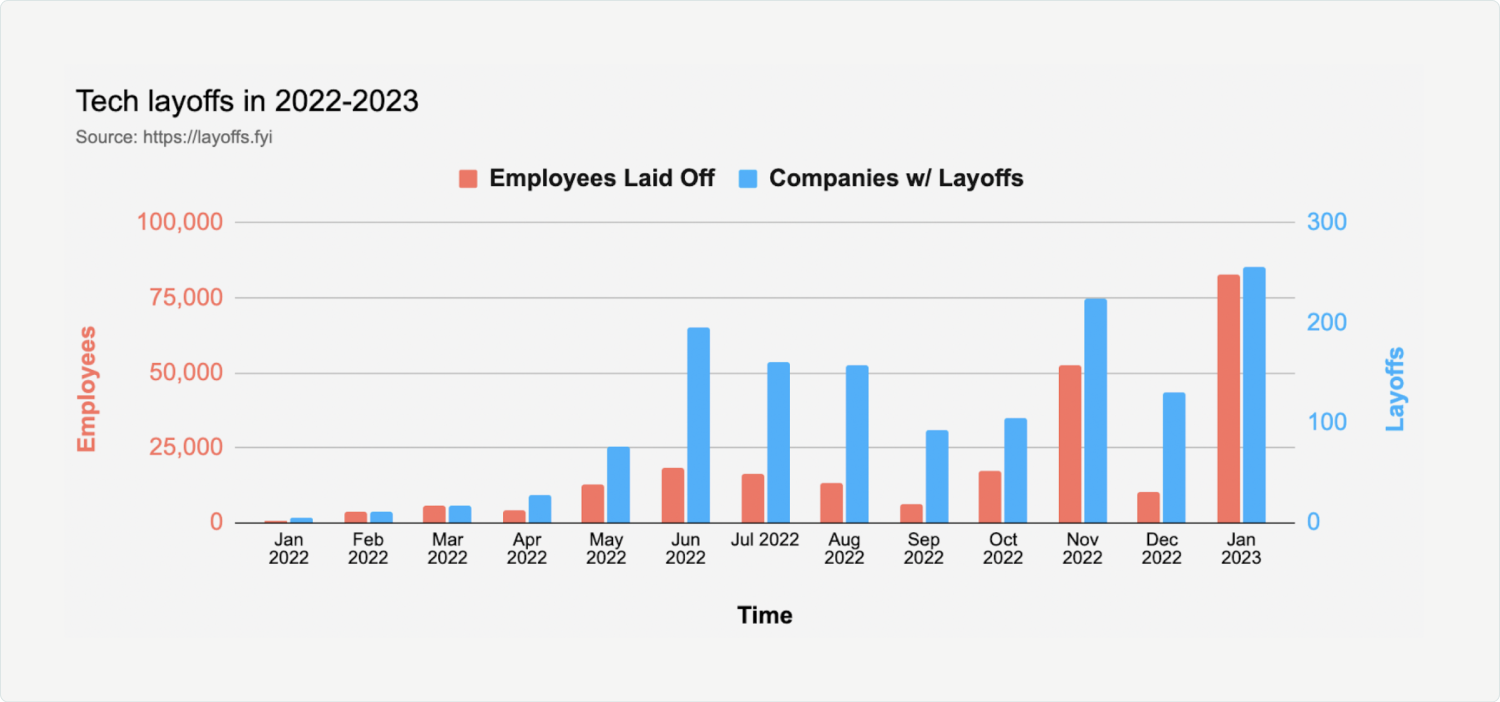
Employees in the United States, and around the world, have taken to social media to vent their anger and frustration at being laid off.
In many cases, employees received no advanced warning about these decisions. They simply woke up and were unable to log in to their accounts, and unable to say goodbye to their colleagues.
Posts like the ones below are becoming all too frequent online, and the huge engagement numbers they generate are indicative of the wider sense of anxiety, frustration, and fear that employees are feeling in this economic climate.
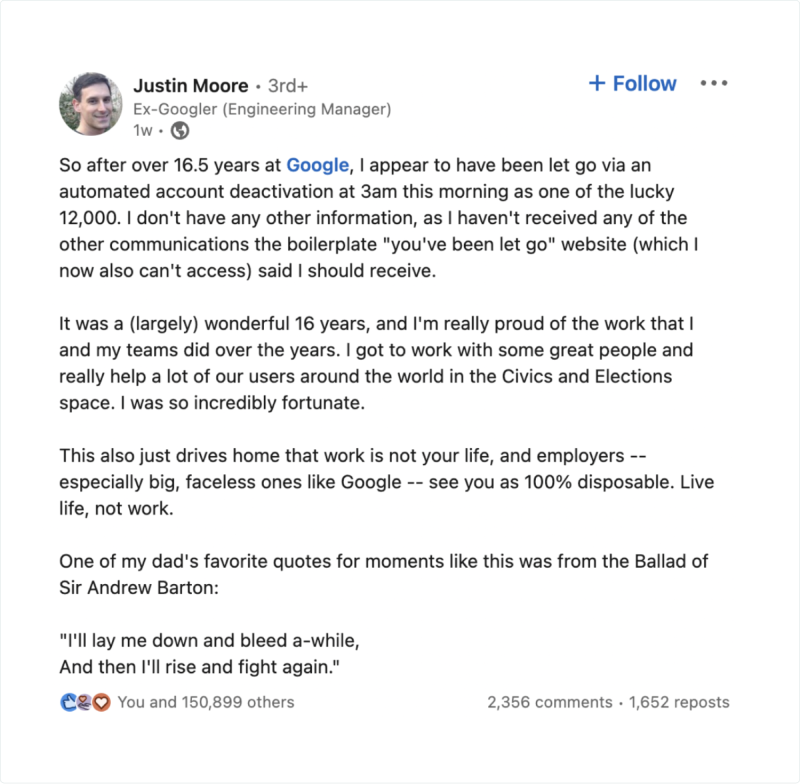
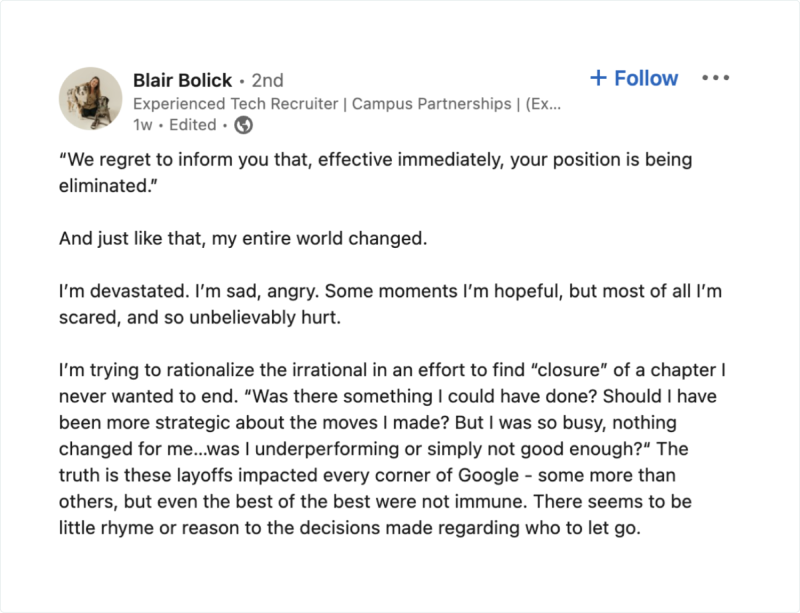
With some tech employees being laid off not once, but twice in the last year, the risk of getting hired and potentially going through this all over again is an unappealing thought for many. That is, if they can find another job.
With inflation, rising interest rates, and the current economic downturn, salary cuts and hiring freezes are also rolling out, making it challenging for job seekers to find replacement positions.
Fueling the freelance movement
On a brighter note, these tech layoffs are converging with a positive macro trend already growing: Everyone’s going freelance. In the US alone, it’s projected that more than 50% of workers will be freelancing within the next 5 years (this number is already approaching 40%). That’s 90 million freelancers!
Americans also filed a record number of small business applications in 2021 and 2022, further proving that many workers are turning to the greener pastures of entrepreneurship, freelancing or starting a side hustle. And this is just one country.
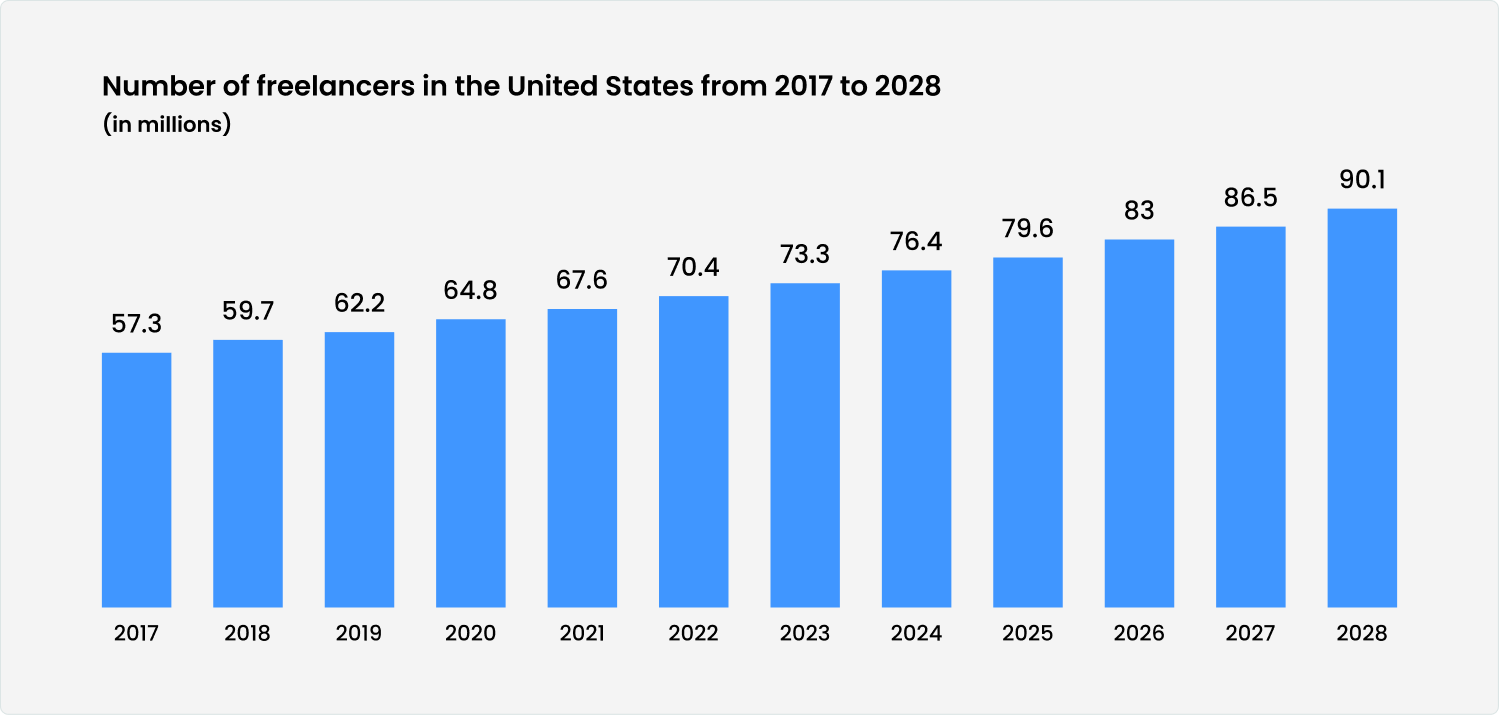
Choosing multiple jobs over traditional employment
Instead of going back to a single full time role, many professionals are choosing to either:
- Freelance with various clients to de-risk their financial situation and take more control over their careers, or
- Work multiple jobs (with or without the knowledge of their employers)
While working for multiple employers isn’t a criminal offense, it’s often considered a breach of contract, which can risk potential lawsuits. Not to mention the fact that it can be very tricky juggling workloads and overlapping meetings for different companies.
Working multiple jobs in secret is not sustainable (and in many cases, not ethical) for most people, but the growth of this phenomenon shows a huge desire for new working relationships. There’s even a trending term for it now: polyworking.
The growing number of people choosing to be “overemployed” is highlighted by the Overemployed Discord channel.
An active community of over 42,000 people, members freely talk about how to manage multiple jobs, share their success stories, and search for jobs in a community of like-minded people who are seeking financial freedom.
An alternative to working for multiple employers is working one full-time job, while also taking freelancer assignments This enables workers to have a stable income as they build a network of clients on the side, ensuring they’re not completely reliant on income from one company.
Freelancing means workers are able to dial their workload up or down to fit their lifestyles, and in many cases, they can earn significantly more than an average full-time salary. They’re also no longer at the mercy of working for a company that might let them go arbitrarily.
The multiple “pros” of diversifying your income
In addition to keeping their existing skills sharp, going freelance gives professionals more career opportunities than their previous jobs.
Upskilling
Freelancing is as much about business skills as it is about professional ability. Choosing a freelance life means employees need to quickly learn about things like networking, marketing, pricing, and sales. Plus, they need to manage their own finances and taxes, and set up a suitable business structure.
All of these elements combine over time to give people valuable new skills and different career avenues to explore. It can also lead to business expansion, with many people choosing to start agencies, or build their own tech companies.
Ability to increase income, without increasing working hours
Freelancers and consultants are typically hired to solve specific problems for a company, which means they can charge higher rates than they could ever have hoped for as an employee.
They’re also not bound by hourly rates, meaning they can name their fee for a project, and then complete this in a timeframe that is agreed upon before work begins.
This gives freelancers more control over their time, and more freedom to create a better life balance—while also having the money to enjoy it.
Working remotely
While many employers insist on an office-only or hybrid working model for their employees, jobs that are fully remote free people from having to work within a specified town, state, or country.
This enables freelancers to embrace the digital nomad lifestyle, and it allows people who want to work from overseas (or covertly work for multiple employers) to do so.
With the advancement of asynchronous communication tools, a growing number of people are quickly figuring out how to juggle two jobs and double their income without anybody knowing.
Greater flexibility
Working multiple jobs can mean earning a lot more money for many people. It can also give them the freedom to enjoy it.
As a solo business owner, setting aside time to focus on family, holidays, health, and hobbies is much easier than it was as an employee. This results in a career that is more sustainable and more enjoyable than their previous 9 to 5.
While there are, of course, downsides to working multiple jobs or freelancing—such as difficulty finding clients, burnout, and work overload—the pros tend to far outweigh the cons for people who are motivated to escape the traditional employee-employer dynamic.
Wrapping up
The rise of the gig economy, combined with the pandemic tech layoffs and ongoing economic uncertainty, is leading to the evolution of a new type of employment relationship. This is one that emphasizes flexibility, provides workers with access to a range of health benefits, and is designed to meet the changing needs of today’s workforce—such as working for multiple employers and diversifying income.
This flexibility benefits workers in many ways, but the fundamental problem is that all workplace benefits are tied to only one form of work—the employment relationship. To enable truly flexible benefits, many current regulatory and legal barriers need to be removed. Here’s hoping that this movement is one of the key factors in the catalyst for change.





